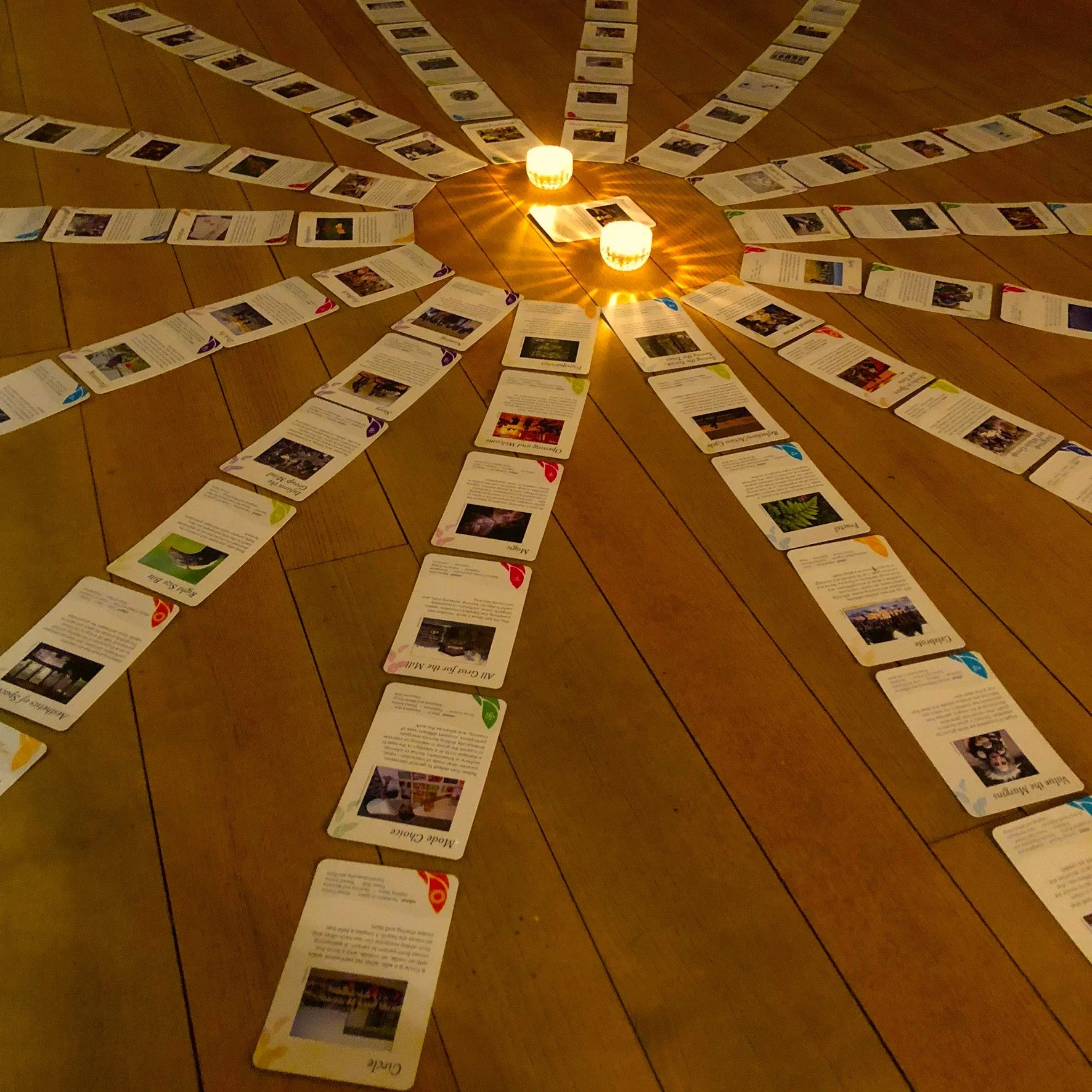Fairytale Ways is an enchanting way into living an intentional life. The metaphor and poetry available to our imaginations in a long luxurious read of a winding tale - allows a flowing rhythm that builds along with our own heartbeat. When I am immersed in a fairytale or a folk story, my mind begins to see signs of incredible synchronicity all around me. It is a very satisfying feeling. I begin to feel deepened connections to the outer world that trails what is happening in my reading life as well as my own interior world. This is all to say - a comforting sense of ancient threads that are raveling along the edges of my skirts.
Fairytales in the richest and true sense of a tale is really a book to live by. The messages found in such a story are profound if you remain a student to wonder. A curiosity of exploration enlivens how the world is unfolding to you at any particular moment. It is a sort of warp and weft of veil that you are engaged in. As though you take a piece of colorful silk - lift it up gently as if loosely about to shake a blanket - let it fall back down to cover your imagination and everyday life. It is nothing short of pure loveliness.
Reading a fairytale takes me on a journey that I would not otherwise go on. Surrendering to an ancient tale or a more modern fairytale written by a current author brings me gifts to treasure. Usually this sort of read is a slow going type of experience. These stories are filled with rich and satisfying imagery. It allows me to live in a world of magic while I am engaged with the storybook. I find myself embracing a more generous way of thinking while in the midst of such a tale. It is a guide of wonder-making.
Pathways in my mind begin to open. Brain neurons seem to feel richer and bathed in all the good chemicals that give a sense of enrichment and contentment. A fairytale allows me to bring new ideas to my everyday life with a veil of enchantment surrounding the world in a bit of a fairytale mist. Have you felt this way while reading these kinds of stories? It is being cloaked in the authors imagination - come to life within you. The sharing of this exchange is such a generous and abundant gift to me as the reader. Dare I say - it is a bit of suspension of the real and harsh ways of the world. I think when we are able to detach a bit from the rough world ways - a replenishment comes over us - allows us to move on again. A steady walking forward after a rich nourishment.
I am able to take on the hard work of living with a bit of a clearer mind after reading and engaging with a fairytale journey. I feel as though fresh new ideas seem to drip slowly toward a movement of colorful. Pieces of the story resonate more strongly than others. This is of course because these are the layers of understanding needed in a particular moment in a life biography. A bit of wisdom tale. It is uncanny how the stories I pick up to travel with always bring a magic resonance to understanding and reflection in the wrestling of the moment. Fairytales are medicine ways. A remedy for the ills and woes of a life overcome with challenges - highs and lows of living ways.
After the Forest brings all of these delicious feelings into view. Themes of the witch, a gingerbread house, struggle to get by, death, grief, countryside in ruin after war. Greta carries a secret - how this unfolds is creative and unique in the telling. In a village of superstition - gossip and superstition rein. Isn’t this true in our modern everyday lives as well? You see the deeper resonance of fairytale stories and how they mirror our mundane lives. This carries throughout with the theme of the dark forest and where we might be struggling to understand in our own lives. Fairytales are the very stuff of life! If we choose to learn from these stories - not only will we grow and expand in our understanding - we will find the pathways we may need to explore next. Fairytale’s are the remedy for modern day ills. Stories have always been told around the fire with friends and family. Embracing an inner rich exploration of these sorts of tales provides a wide view of ourselves and the world. Navigation becomes the river compass needed to grow into richer humans.
A child lost in a village draws kindness like a swarm of bees: mothers young and old flock and fluster, their wombs tightening in sympathy. Cries are taken up and the child kept in safety until the mother arrives, face ashen, arms reaching.
The cries of a child lost in a vast forest are very different. There is no one there to hear, and the threat of the wild is there in every old tree’s creak, every scratch and scurry in the undergrowth. Alone in the forest there is real fear. Once felt, it is never forgotten.
~After The Forest by Kell Woods











